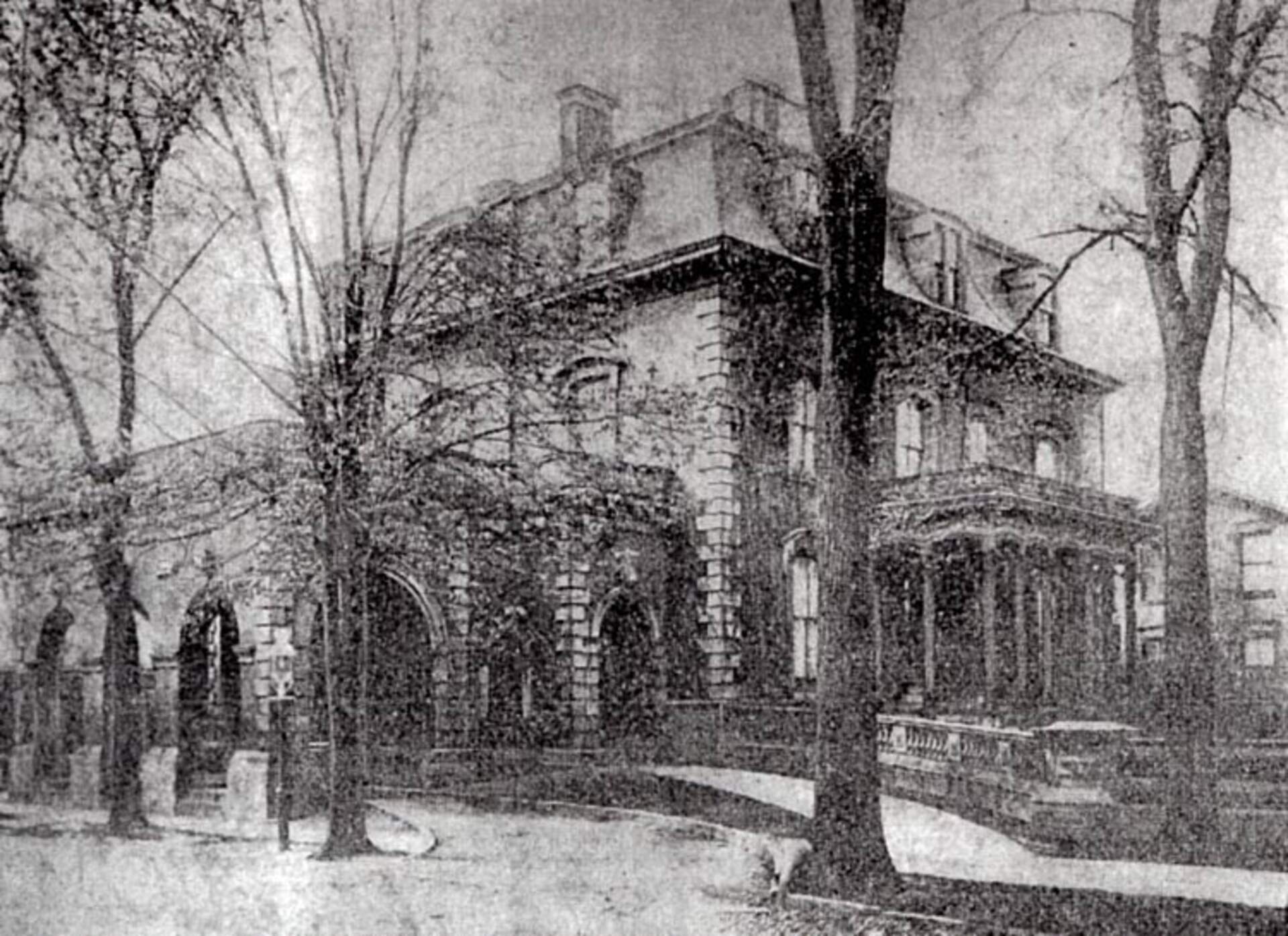
The mansion viewed from Delaware & Tracy. Rumsey relations continued to live in the homes on Delaware and Tupper for several decades. The Bronson Rumsey mansion at 330 Delaware was given to the Children's Aid Society upon the death of Mrs. Lawrence Dana Rumsey in 1943. Courtesy of WNY Heritage Press
Charles Cary Rumsey's Buffalo
Mar 3, 2019 2:00pm — 12:00am
“Buffalo’s Rumsey and Cary Artistic Heritage”
A program in association with the exhibition, Charles Cary Rumsey: In Motion
Presenter: Nancy Weekly, Burchfield Scholar, Head of Collections and Charles Cary Rumsey Curator,
Burchfield Penney Art Center and Burchfield Penney Instructor of Museum Studies, SUNY Buffalo State
Preceding a tour of the exhibition, Charles Cary Rumsey: In Motion, Nancy Weekly will give a presentation about how the sculptor fits into a rich history of art, architecture and patronage established by members of the Rumsey and Cary families in Buffalo. As the museum for Western New York arts, the Burchfield Penney Art Center is home to a major collection of bronze and stone sculpture by Charles Cary Rumsey (1879-1922), who during World War I served as Captain of the Cavalry and led troops in France. He also became an important polo player on the American team, riding with such notables as Averell Harriman, Thomas Hitchcock, and Seymour Knox. Learn more about this era of Buffalo’s art history.
“At the pinnacle of his career, Charles Cary Rumsey died tragically in an automobile accident in 1922. Had he lived longer, his name might very well be among those best remembered for classical figure and animal sculptures transitioning into a modernist aesthetic,” said Nancy Weekly, Burchfield Penney head of collections and the Charles Cary Rumsey Curator. “From his early showing at the Pan-American Exposition in 1901 to securing mammoth public commissions with the architectural firm that built the New York Public Library and Manhattan Bridge, Rumsey was sought after as a sculptor whose work Expressed the ideals of early 20th-century America. In addition to his art, Rumsey was also a consummate equestrian, representing the United States in the burgeoning sport of polo.”
Born into a socially prominent Buffalo family with several artists in its history, Charles Cary Rumsey showed an early interest in art and in animals. When his parents gave him his own horse as a child, he impressed them with his skill in sculpting the creature. Fortunately, Rumsey's family encouraged his talent in sculpture, and at only 14 years of age, he was permitted to remain in Paris following a family vacation to apprentice under the renowned American sculptor Paul Weyland Bartlett for two years. This experience under Bartlett's tutelage served as a valuable supplement to his traditional education in America, which continued at the Nichols School in Buffalo upon his return home in 1895.
In 1898, Rumsey began studies at Harvard University, taking summer classes at the Boston Museum of Fine Arts. In 1901, before he had completed his schooling, Rumsey exhibited work at the Pan-American Exposition in Buffalo. He returned to Paris to study at the Academies Julian and Colarossi, where his chief advisor was the famous animalier (animal sculptor) Emmanuel Fremiét (1824-1910), whose famous public sculptures include the gilded Fame with Pegasus that adorns the Pont Alexandre III.
Rumsey’s most significant public commission was to design a frieze for the triumphal arch at the approach to the new Manhattan Bridge being built by Carrère and Hastings, Architects (best known for their 1898 New York Public Library). His carved stone frieze, The Buffalo Hunt (1910-16) is six feet high and 40 feet long, set high in the Beaux-Arts structure, flanked by a colonnade. The Brooklyn side has pylons with sculptures representing New York and Brooklyn by Daniel Chester French (1850-1931), whose colossal portrait of President Abraham Lincoln (1920) in Washington, DC is a national treasure.
Rumsey’s figures and animals articulated in shallow space with deep shadows, resemble some of the Parthenon’s marble friezes of Ancient Greece.
In 1938, Mary Harriman Rumsey, the artist’s widow, donated some of her husband’s plaster casts for the Rice Memorial Stadium friezes to the University of Buffalo, where they were installed in Clark Gymnasium. They were removed in 1993, repaired, and the Casting Institute of the State University at Buffalo’s Art Department used them as used as models to create bronze casts. The three bas-relief bronze sculptures depicting Olympic Games were installed near Alumni Arena on the North Campus of the State University of New York at Buffalo.
Other public bronze sculptures in Buffalo includes a 3/4-scale version of The Three Graces (also known as Arden Fountain, 1911) in Forest Lawn Cemetery. The Centaur (1914), which stands 13 feet high outside the Buffalo History Museum, debunks Greco-Roman mythology by representing the half-human/half-horse creature as a rider clutching his steed so closely that they appear united. A small version of an equestrian Pizarro (circa 1914) sits in front of the Albright-Knox Art Gallery. [After Rumsey’s death, his widow presented mammoth bronze casts to Trujillo, Spain, where Pizarro was born, and Lima, Peru, in front of the Governor’s Palace and near Pizarro’s grave.]
This event is free with gallery admission. Free for docents of Explore Buffalo and the Burchfield Penney.